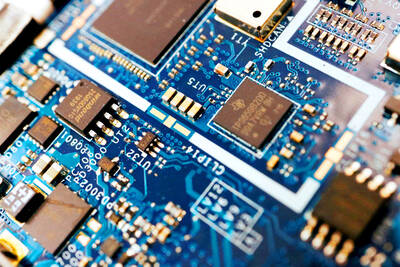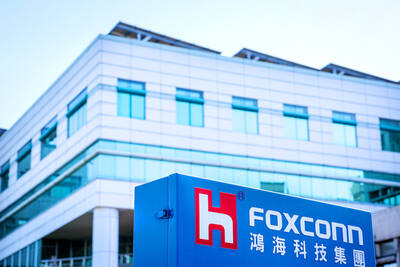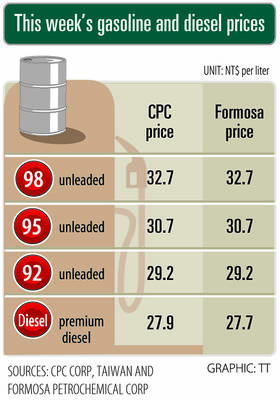Washington’s US$39 billion of incentives to boost US production of semiconductors is unlikely to fully close the output cost gap with Asia, but other benefits such as proximity to clients bolster the case for more US output, the official leading the project said.
“We have a lot of strategic advantages as a country. We also have a cost gap, which the CHIPS [and Science] Act is designed to address,” US Department of Commerce CHIPS Program Office Director Mike Schmidt said.
The act aims to narrow the cost difference in the short term, “but then make sure that we are creating enough scale, enough cluster dynamics and enough innovation that 10 years from now the cost of doing business here is competitive enough,” he said.

Photo: REUTERS
The US Congress last year passed the CHIPS and Science Act to return advanced semiconductor manufacturing to the US after COVID-19 pandemic lockdowns and supply chain disruption laid bare US reliance on chips from Asia and particularly Taiwan.
The act gives the commerce department almost US$40 billion over five years to boost production, and a further US$11 billion for research and development in advanced semiconductor manufacturing, development of new technologies and training workers.
Schmidt, who spoke at an event hosted by the Information Technology & Innovation Foundation on Thursday, was responding to a question by Coalition for a Prosperous America chief economist Jeff Ferry, who said that Taiwanese fabs have a 40 percent cost advantage over those in the US.
Despite the investment and development incentives that the administration of US President Joe Biden is providing, it would still be cheaper to make chips in Asia — where many customers are based — which could prompt plant closures in a decade, Ferry said.
Schmidt said his office is thinking about how to use the US$39 billion as starter capital to create an ecosystem that would have “self-sustaining competitive dynamics.”
“That means creating enough scale now that you have enough of a supplier base, a strong-enough workforce, the infrastructure and the kind of cluster dynamics that make ongoing investment economically attractive now,” he said. “We might not close the cost gaps, but there are a lot of attractive things about doing business in the United States right now, including the major semiconductor customers in the world.”
There are “really attractive dynamics around shared innovation that happens with co-locating with those companies,” Schmidt said.
The Biden administration has received more than 200 applications from companies for access to the US$39 billion, US Secretary of Commerce Gina Raimondo said on April 14.
Schmidt said his office, which has a team of about 80 people that would grow to about 150 by the end of this year, is “going to have to make tough choices.”
“There are going to be a lot of really high-quality applicants that are not going to get as much funding as they might have hoped,” he said. “A lot of good applicants might get no funding at all.”
Another round of pre-applications — this time, from current generation, mature-node and back-end output facilities — opens on Monday, and full applications would be accepted from June 26, he said.

GREAT SUCCESS: Republican Senator Todd Young expressed surprise at Trump’s comments and said he expects the administration to keep the program running US lawmakers who helped secure billions of dollars in subsidies for domestic semiconductor manufacturing rejected US President Donald Trump’s call to revoke the 2022 CHIPS and Science Act, signaling that any repeal effort in the US Congress would fall short. US Senate Minority Leader Chuck Schumer, who negotiated the law, on Wednesday said that Trump’s demand would fail, while a top Republican proponent, US Senator Todd Young, expressed surprise at the president’s comments and said he expects the administration to keep the program running. The CHIPS Act is “essential for America leading the world in tech, leading the world in AI [artificial

DOMESTIC SUPPLY: The probe comes as Donald Trump has called for the repeal of the US$52.7 billion CHIPS and Science Act, which the US Congress passed in 2022 The Office of the US Trade Representative is to hold a hearing tomorrow into older Chinese-made “legacy” semiconductors that could heap more US tariffs on chips from China that power everyday goods from cars to washing machines to telecoms equipment. The probe, which began during former US president Joe Biden’s tenure in December last year, aims to protect US and other semiconductor producers from China’s massive state-driven buildup of domestic chip supply. A 50 percent US tariff on Chinese semiconductors began on Jan. 1. Legacy chips use older manufacturing processes introduced more than a decade ago and are often far simpler than

Hon Hai Precision Industry Co (鴻海精密) yesterday said that its research institute has launched its first advanced artificial intelligence (AI) large language model (LLM) using traditional Chinese, with technology assistance from Nvidia Corp. Hon Hai, also known as Foxconn Technology Group (富士康科技集團), said the LLM, FoxBrain, is expected to improve its data analysis capabilities for smart manufacturing, and electric vehicle and smart city development. An LLM is a type of AI trained on vast amounts of text data and uses deep learning techniques, particularly neural networks, to process and generate language. They are essential for building and improving AI-powered servers. Nvidia provided assistance

Gasoline and diesel prices this week are to decrease NT$0.5 and NT$1 per liter respectively as international crude prices continued to fall last week, CPC Corp, Taiwan (CPC, 台灣中油) and Formosa Petrochemical Corp (台塑石化) said yesterday. Effective today, gasoline prices at CPC and Formosa stations are to decrease to NT$29.2, NT$30.7 and NT$32.7 per liter for 92, 95 and 98-octane unleaded gasoline respectively, while premium diesel is to cost NT$27.9 per liter at CPC stations and NT$27.7 at Formosa pumps, the companies said in separate statements. Global crude oil prices dropped last week after the eight OPEC+ members said they would